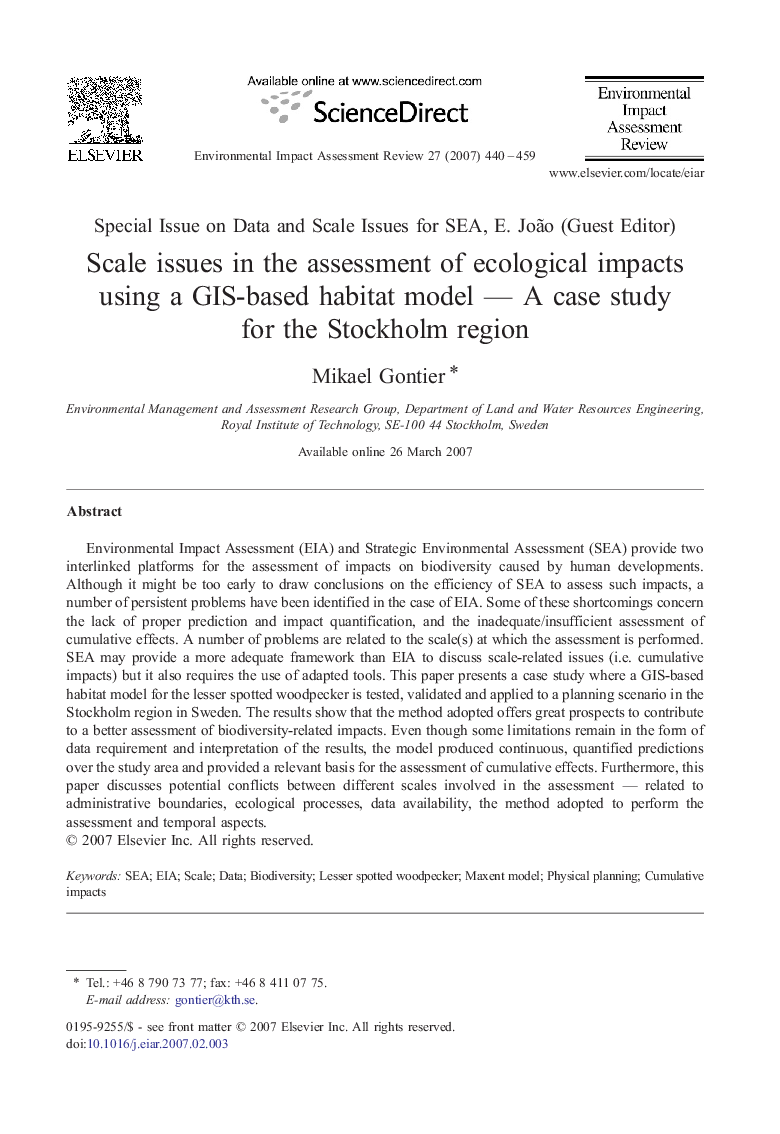| Article ID | Journal | Published Year | Pages | File Type |
|---|---|---|---|---|
| 1053224 | Environmental Impact Assessment Review | 2007 | 20 Pages |
Environmental Impact Assessment (EIA) and Strategic Environmental Assessment (SEA) provide two interlinked platforms for the assessment of impacts on biodiversity caused by human developments. Although it might be too early to draw conclusions on the efficiency of SEA to assess such impacts, a number of persistent problems have been identified in the case of EIA. Some of these shortcomings concern the lack of proper prediction and impact quantification, and the inadequate/insufficient assessment of cumulative effects. A number of problems are related to the scale(s) at which the assessment is performed. SEA may provide a more adequate framework than EIA to discuss scale-related issues (i.e. cumulative impacts) but it also requires the use of adapted tools. This paper presents a case study where a GIS-based habitat model for the lesser spotted woodpecker is tested, validated and applied to a planning scenario in the Stockholm region in Sweden. The results show that the method adopted offers great prospects to contribute to a better assessment of biodiversity-related impacts. Even though some limitations remain in the form of data requirement and interpretation of the results, the model produced continuous, quantified predictions over the study area and provided a relevant basis for the assessment of cumulative effects. Furthermore, this paper discusses potential conflicts between different scales involved in the assessment — related to administrative boundaries, ecological processes, data availability, the method adopted to perform the assessment and temporal aspects.
